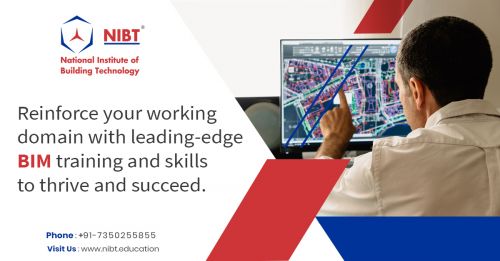Reinforce your working domain with leading-edge BIM training and skills to thrive and succeedA Story by NIBTNIBT's comprehensive suite of eLearning packages deliver holistic solutions for an exceptional learning experience.As we move forward into a highly competitive future, individuals and professionals must reinforce their working domain with leading-edge skills to thrive and succeed. Professional or skill development is no longer a rarity, it’s a potential requirement. With disruptive trends, technology, and processes taking over, honing a specialized skill-set makes it easier for you to do what is expected of you, or something that piques your interest. The construction sector on a global level is one of the fastest-growing sectors in every country for people, companies, and professionals. Furthermore, if construction enterprises need to thrive, they do require skilled professionals to build a robust platform that is capable of working on a global level.
The world of construction and infrastructure has its advantages and disadvantages. One of the most critical aspects of construction engineering is the presence of the word or phenomenon called “disaster”. Through modernized tools and processes like Building Information Modeling (BIM) and autonomous technology or automation, disaster risks can be mitigated substantially. These new improvements have changed the way AEC professionals design, analyze, and build projects.
The Current Construction Scenario.
New technological tools and processes use resilient tools and technology to design buildings, communities, or landscapes that respond extremely well to any kind of construction disaster. Moving from traditional workflow to a BIM or automated workflow has contributed to the resilience factor. A legacy or traditional retrofit comprises processes that include limited scalability in terms of �"
Data Compilation
Data Conversion:
3. Documentation
Construction Process
▪ Traditional methodologies to create spreadsheets
BIM’s contribution to disaster management
The deployment of BIM is extremely beneficial for every project phase or lifecycle viz. design, development, FM, and demolition. The role of BIM for pre and post-disaster management can be listed as �"
Pre-Disaster Phase
Post-Disaster Phase
Recovery & Reconstruction
Leverage new mechanization
Adoption of BIM with tools or software like Revit, Navisworks, Laser Scanners, IoT, or autonomous systems boosts project efficiency, and productivity, and reduces turnaround times thereby cutting down on costs and construction waste. Offering various skill-set training programs for professionals expands the scope of an enterprise to take-in global projects and showcases its services and solutions. There are various job roles in the construction sector that require a specialized skills-sets viz. General Laborers, Surveyors, Project Managers, Civil Engineers, Production Managers, etc.
Visit Us : https://nibt.education/ Contact Us : +91 73502 55855 © 2022 NIBT |
Stats
25 Views
Added on April 22, 2022 Last Updated on April 22, 2022 Tags: BIM Training Online, Online BIM Certification, Online BIM Training, Online BIM Classes, Online BIM Training Courses, BIM Courses Online Author
|


 Flag Writing
Flag Writing